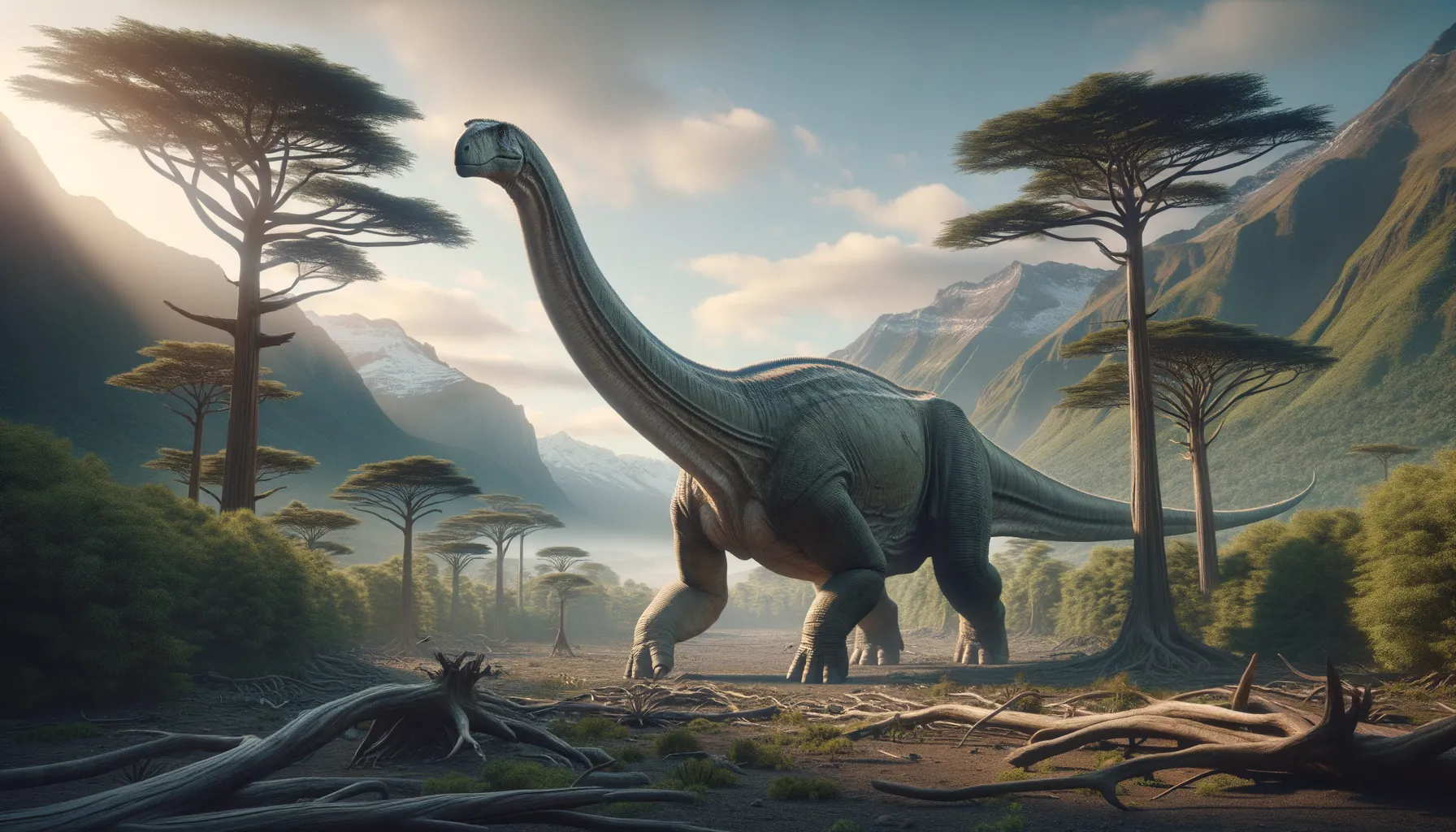
Elaltitan
Giant titan of the Cretaceous landscape.
Period
Cretaceous
Length
Length could reach up to 21 meters (69 feet).
Height
Height was around 10 meters (33 feet).
Weight
Approximately 30 to 40 tons.
Elaltitan was a gigantic dinosaur that belonged to the sauropod group, known for its long neck and tail. It lived during the late Cretaceous period and was one of the massive titans roaming what is now South America. Its fossils provide insights into the lives of these colossal creatures, offering clues about their size, diet, and the environments they inhabited.
Diet
Elaltitan was herbivorous, primarily feeding on vegetation. Its long neck allowed it to reach high branches and plants, making it an efficient forager in its habitat. This dietary adaptability helped sustain its large body size.
Hunting
As a herbivore, Elaltitan did not hunt other animals. Instead, it spent much of its day grazing and foraging for plants. Its size likely deterred predators, reducing the need for active hunting defenses.
Environmental challenges
Elaltitan faced challenges like plant scarcity during dry periods, which could affect food availability. Changes in climate may have impacted plant growth, compelling these giants to migrate in search of lush feeding grounds. The sheer size of Elaltitan could also pose challenges in navigating dense forests or rough terrains.
Speed
Elaltitan was likely slow-moving due to its massive size.
Lifespan
It potentially lived for several decades.
First discovery
Elaltitan was first discovered in Argentina in 2011.
Fun Facts
- Elaltitan was a massive dinosaur that lived during the Late Cretaceous period, around 70 million years ago.
- Elaltitan belonged to a group of dinosaurs called titanosaurs, known for their enormous size and long necks.
- Fossils of Elaltitan have been found in Argentina, giving us clues about its habitat and lifestyle.
- Despite its large size, Elaltitan was a herbivore, which means it fed on plants.
- Scientists estimate that Elaltitan could have weighed as much as 20 tons, similar to the weight of several elephants combined.
- Elaltitan's long neck would have helped it reach high vegetation, much like modern giraffes.
- The name 'Elaltitan' means 'titan from Elal', referring to the region in Argentina where it was discovered.
Growth and Development
Elaltitan exhibited rapid growth in its early years to reach its enormous size. This fast development would require abundant nutrition and a stable environment. Juvenile Elaltitans may have relied on group behaviors for protection as they grew.
Habitat
Elaltitan thrived in vast floodplains and forested regions of South America. These environments provided an abundance of plant material necessary for its diet. The diverse ecosystems supported not only Elaltitan but a wide range of dinosaur species.
Interaction with other species
Elaltitan likely coexisted with various dinosaur species, maintaining peaceful relations due to its non-threatening herbivorous nature. Predatory dinosaurs may have been discouraged by its size, opting for smaller prey. It may have shared habitats with other sauropods or smaller herbivores.
Natural lifespan
Elaltitan could live naturally for over 50 years.
Reproduction
Elaltitan likely laid eggs in secure nests on the ground. The species practiced parental care, protecting their young from predators. Reproductive strategies included selecting optimal nesting sites to ensure the survival of hatchlings.
Social behaviour
Elaltitan may have traveled in herds for protection and social interaction. Such group behavior would help with raising young and navigating their environment. These social structures could also provide access to optimal feeding areas through collective movement.
Fossil locations
Elaltitan fossils have primarily been found in the Patagonia region of Argentina. These discoveries have provided insights into its anatomy and the ecosystems of the Cretaceous period. Ongoing excavations may uncover additional fossils, further enhancing our understanding of this colossal dinosaur.
